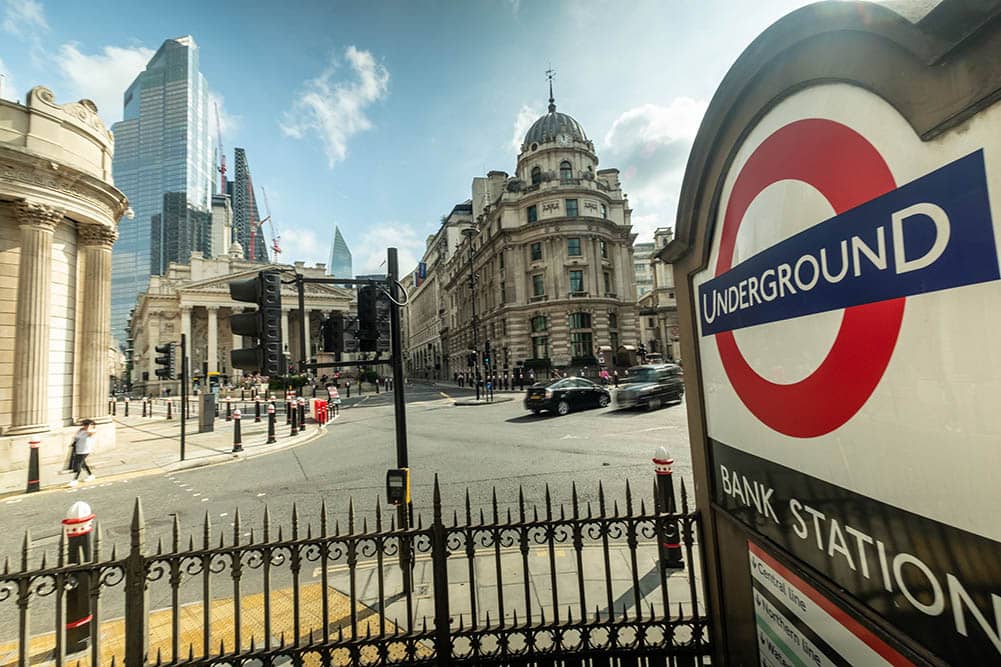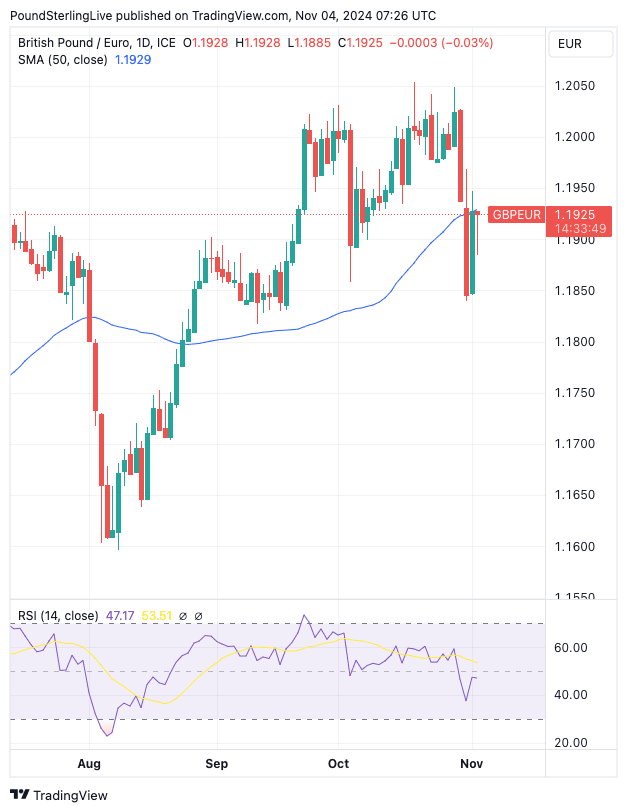Pound to Euro Week Ahead Forecast: Near-term Pressure, Bank of England Key Risk
- Written by: Gary Howes

Image © Adobe Images
Pound Sterling is under near-term pressure against the Euro as it enters a week that will be dominated by a Bank of England interest rate decision.
The Pound to Euro exchange rate (GBP/EUR) dropped 0.62% last week following a negative reaction to the new Labour government's first budget, but the weekly loss would have been more severe were it not for Friday's rebound.
UK bond yields surged and the Pound dropped after the government announced a significant boost to borrowing, taxation and expenditure, which gave investors concerns about the sustainability of the UK's public finances and growth trajectory.
For now, Friday's rebound back above 1.19 is considered a stabilisation in price action as opposed to an outright return to the Pound's winning ways.
Compare Currency Exchange Rates
Find out how much you could save on your international transfer
Estimated saving compared to high street banks:
£25.00
Free • No obligation • Takes 2 minutes
In the process, GBP/EUR has fallen below the nine-day moving average which suggests near-term price action over the first part of the week could be lower.
It has also fallen below the 50-day moving average which sits at 1.1930 and is where Friday's rebound failed and where we find the focus of Monday's price action.
There is a chance the 50 DMA could prove to be a resistance point, as is often the case when big moving averages are encountered, meaning GBP/EUR could remain under pressure in the early part of the week and we could see the pair drift back towards 1.19.
Above: GBP/EUR at daily intervals showing the 50-day moving average and the RSI.
The Relative Strength Index (RSI) now sits below 50 and is pointing sideways, which confirms near-term momentum favours the downside.
Below 1.19 are last week's lows at 1.1850 which is the start of a broader support zone that lies between 1.1850 and 1.1830.
It is here that the 100 day moving average is found.
To be sure, the medium-term trend (multi-month) remains constructive, but there is a chance we are settling into a multi-week period of consolidation of the 2024 bull run.

From a global perspective, much will depend on this week's U.S. presidential election, where any negative market reaction could result in a GBP sell-off, owing to the Pound's high beta to market sentiment.
Analysts say stock markets tend to rally in the wake of the U.S. election outcome, regardless of the outcome, which would be supportive of the Pound.
We think the worst-case scenario would be a deadlocked vote that generates uncertainty for markets, similar to that of 2000, whereby the result was eventually determined by the courts.
For Pound Sterling, the domestic highlight of the week is Thursday's Bank of England decision, where a 25 basis point interest rate cut is expected.
The cut has long been 'in the price' of the Pound and is unlikely to sway the market. However, the guidance pertaining to the potential for another cut in December will be important.
If the Bank leans towards a second consecutive cut, then the Pound-Euro rate would come under pressure.
However, last week's budget has lowered the odds of a December rate cut and the market now prices a quarterly pace to the UK rate cutting cycle, which is relatively supportive of the outlook.
"GBP should react most prominently to any implicit forward guidance. The FX-yield link has ruptured since the Budget and higher yields have not helped GBP. But higher growth and inflation should lead to a less dovish BoE and support the currency," says Dominic Bunning, FX strategist at Nomura.
The Bank will have had its wings clipped by last week's budget, where the government announced a significant boost to spending which analysts say could give a 'sugar rush' to the economy next year.
The Office for Budget Responsibility upgraded its near-term growth and inflation forecasts following the budget and we will be watching for the same at the Bank of England.
Any upgrades to inflation and growth would amount to a strong signal that the Bank of England acknowledges it will have to maintain a tighter monetary policy.
This can support the Pound.
Analysts say the biggest downside risk to Sterling would be a scenario where the Bank lowers interest rates and guides towards another rate cut as early as December.






